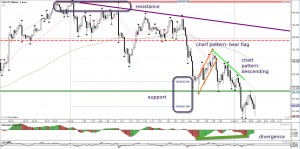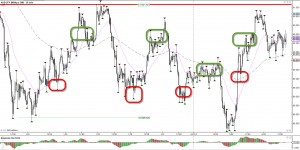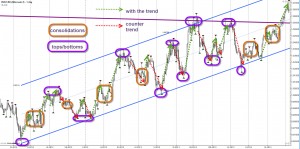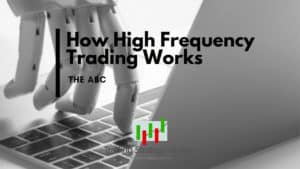Finding Forex Opportunity: Using The Pareto Principle for Masterful Entries

Table of Contents
Discover how to find Forex opportunity with this complete guide. In the Forex market, timing is key because the price makes many ups and downs and/or consolidations prior to its trend continuation. A trader does not want to buy or sell at any random spot but wants to define that moment – even if their type of trend environment (trend, reversal, or range) has been met.
For instance, a “with the trend” trader wants to avoid buying at places where a correction is highly probable, also known as buying at tops. A “reversal trader” does not want to start selling in an uptrend very close to a key support level, etc.
TOFTEM MODEL
That is the reason why in our Forex trading room we are not only analyzing the trend but other factors as well. To be precise, we use our own “homemade” customized model for this process:
1) Trend
2) Opportunity
3) Filters
4) Trigger
5) Entry Method
The abbreviation of this model is TOFTEM (using the first letter of each word) and we use the 5 steps as our model for analyzing the market at any time and level.
In our opinion, a trading document should at the minimum address all of these 5 points and explain which tools, methods and/or indicators are used for defining and matching with the desired environment.
Remember, Forex traders are like detectives: we are trying to analyze whether the current market environment matches our desired trading plan. If it matches our plan, we can look for setups and potential trades. If not, then we move on to the next currency pair.
Difference Between Forex Opportunity and Trigger
The difference between point 2 (Forex opportunity) and point 4 (trigger) can sometimes be small, or even nothing at all. In other trading plans, there could be substantial differences. This will vary from trader to trader.
In theory, the Forex opportunity is a type of environment, which a trader would like to encounter before trading. A reversal trader would, for instance, see multiple divergences on multiple time frames as an opportunity, but not as the trigger. The trigger might be a candlestick pattern such as a pin bar. Or the entry itself might be upon the retracement of the pin bar to the 50% Fibonacci (Fib) retracement level (when placing a Fib on the pin bar itself).
Now with the difference between opportunity and trigger explained, let’s dive into explaining various types of opportunity.
Types of Forex Opportunities
There are various types of Forex opportunities. It will be the choice of each Forex trader to choose and define. In this section of the article, we will summarize a few examples.
1) Divergence for reversal traders: this example was already used in the above paragraph. Multiple divergences on multiple time frames are the desired environment for a reversal trader.
2) Chart patterns for all traders: chart patterns can be great opportunities for all types of traders (range, reversal, or trend) as they provide decent statistical probabilities in combination with precise levels.
3) Support and resistance (S&R) for all traders: the levels are usually static (no change), which makes their interpretation easy. A reversal trader could use these levels to increase their odds of anticipating a reversal spot. A range trader could use the levels to judge where the range continues. A with the trend trader uses the S&R to calculate where the trend could continue.
The list goes on and on. Of course, there are many more opportunities, and I am sure that our readers have a lot of them in mind. The article would be too long to list all of them and therefore lists 3 as examples.
Quantity of Forex Opportunities
Besides the type of forex opportunity, it is also very important to understand, know, and expect the correct number of opportunities each Opportunity of the TOFTEM model generates.
A reversal trade setup, which is looking for divergence on the monthly chart, is obviously not an opportunity that occurs often. If however, a Forex trader expects the setup to happen every week, then there is a mismatch between the expected and realistic number of opportunities from this particular opportunity within the TOFTEM model.
Having realistic expectations about the number of opportunities you find is important, as a mismatch between the two will/could negatively impact the trading psychology (increase impatience for instance with the subsequent problems connected to this).
OCCURRENCE OF VARIOUS OPPORTUNITY
When a Forex trader is deciding what type of opportunity they want to focus on, it is always important to keep in mind how often they occur. It could be a great opportunity to trader monthly engulfing twins, but how often does it occur? To give you an idea of how the market behaves, I will explain a rule which a friend of mine uses: the Pareto principle.
The Pareto principle has other names as well such as the 80-20 rule and the law of the vital few. Basically, the idea was developed by Pareto when observing his garden: 20% of the pea pods in his garden contained 80% of the peas.
The 80-20 rule holds true for various aspects of our trading such as our trading performance and individual performance. In most cases, 20% of the trades generate 80% of the profit or 20% of our actions lead to 80% of the results.
The 80-20 Rule (Forex Pareto Principle)
The market itself can be dissected with the same principle: 80% of the time the market is in the middle of a move (not reversing), whereas 20% of the time the market is forming a top or bottom. Many traders who attempt trading reversals find out the “hard way” how often a potential reversal does not play out / happen.
Then there is a possibility to add one more layer of the 80-20 rule. The markets tend to make lots of sideways moves or consolidations. Other words that are often used to describe these areas are ranges, chop, choppy areas, zones, price zones, supply and demand, corrections, or corrective patterns. These corrections tend to happen 80% of the time, whereas trending moves happen only 20% of the time.
In other words, the price is often (80%) moving sideways and making corrections. When the price does make an impulse, then it does not last long (20%). Using the Pareto principle in Forex can help traders with understanding its natural rhythm and with comprehending how frequently their specified opportunity could occur. Also, read the hidden secrets of the moving average.
Does the TOFTEM model help you as a Forex trader with building our trading document? Could it provide a better method for your trading plan? Or do you prefer your current model? Let us know down below!
Conclusion – Finding Forex Opportunity
Thank you for reading!
Please leave a comment below if you have any questions about Finding Forex Opportunity!







